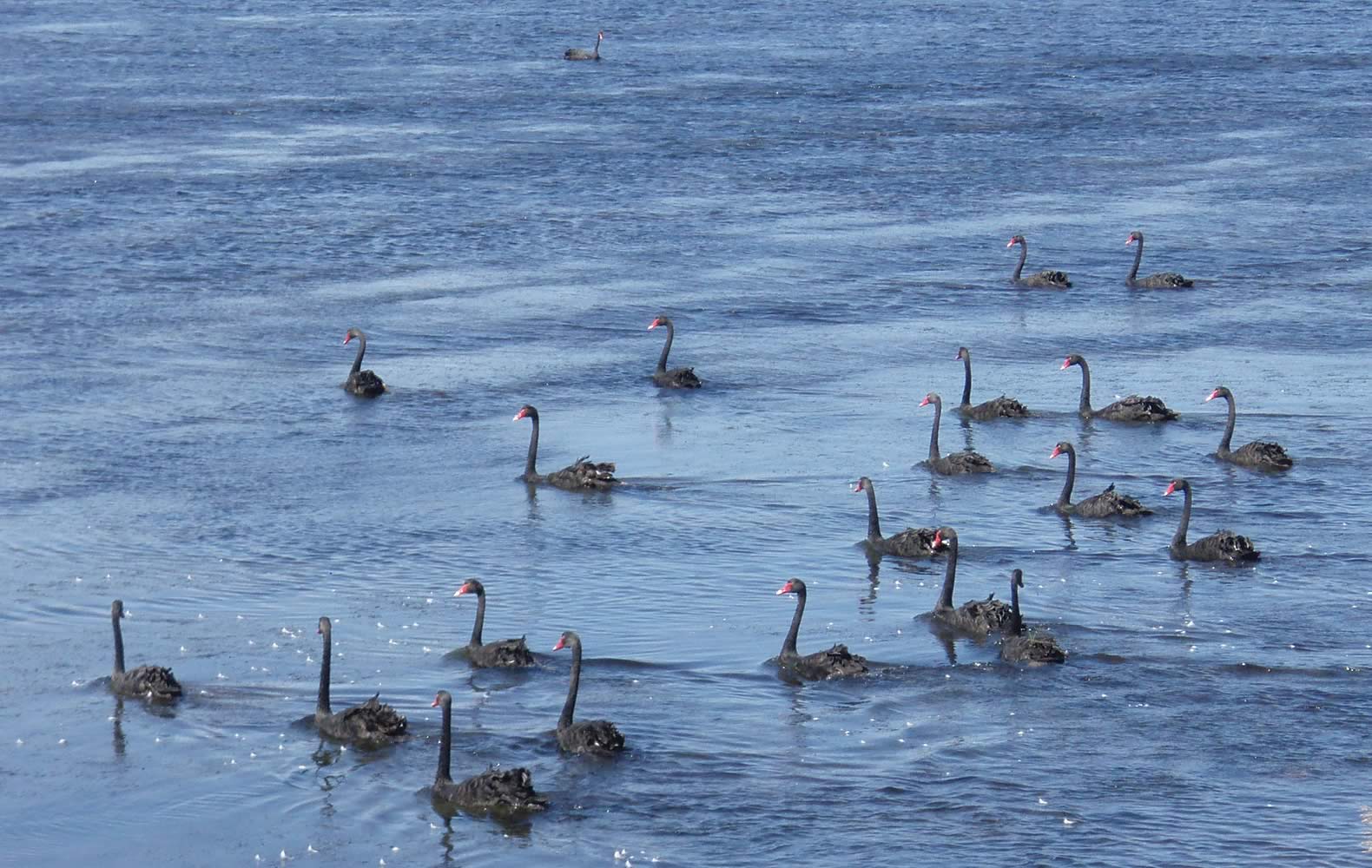Bridgewater’s surprising secret

Black swans.
Image: Derwent Estuary Program
by Peter Grant
Driving across the Derwent River at Bridgewater, you’re not likely to miss the large number of waterbirds, especially black swans, out on the river. More easily missed though is the lovely Bridgewater Foreshore Trail that winds downstream from nearby.
Starting from Gunn Street in Bridgewater, the wide, purpose built pedestrian and bike trail runs some 5km down the Derwent to the outlet of the Jordan River. It sticks close to the river, occasionally looping a little inland to avoid side gullies. The whole way you have views across the water towards kunanyi / Mount Wellington (south-east), Mount Dromedary (north-west) and the hilly northern suburbs of Hobart.
I’m not far into the walk when I realise that the number of birds visible from the Bridgewater Bridge is just a fraction of those living and feeding along the river. Swans and pelicans are the largest and most easily spotted, but there are plenty of gulls, coots, shags, cormorants, herons, egrets, ducks and other waterbirds. I also see birds of prey, including harriers and a white-bellied sea eagle.
Near its start the trail is sometimes close to suburban roads and houses, and at one point it skirts the Green Point Wastewater Treatment facility. At times there are signs of thoughtless human activity, including some dumped household rubbish and a couple of abandoned supermarket trolleys. These are a reminder that people once saw rivers as convenient dumping grounds. The presence of weeds is another sign of our influence here, though at least the blackberries are edible! But while this is no wilderness walk, it is pleasing to see the river and its surrounds in much better shape than they used to be.
That’s especially so when the trail leaves the more built-up areas and loops around the Green Point Nature Reserve. And here it’s noticeable that this part of the Derwent is still tidal. Mudflats and rocks are showing above the water, and flotsam droops from the occasional log. At a couple of points it’s easy to get down to the shore for a closer look at the reeds in which some waterbirds nest. Sea grasses and other aquatic plants, important food sources for swans, can also be seen at low tide.
After the trail rounds the end of Green Point it loops back towards Herdsmans Cove. Here the freshwater of the Jordan River mixes with the brackish Derwent, and the water teems with waders and other waterbirds. There’s a minor panic among the other birds when some swans swoop in and land in the middle of the cove.
If you’ve left a car here, the trail can end at the nearby bridge over the Jordan. Alternatively you can loop back across the Green Point peninsula and return to the start of the trail. I did the latter, taking a bit over two hours in total. This allowed time for bird watching, photography and a drink break. The trail is suitable for strollers and bicycles as well as walkers, and makes a particularly good introduction to walking and waterbirds for children and adults alike.
Wednesday 6 April 2016
